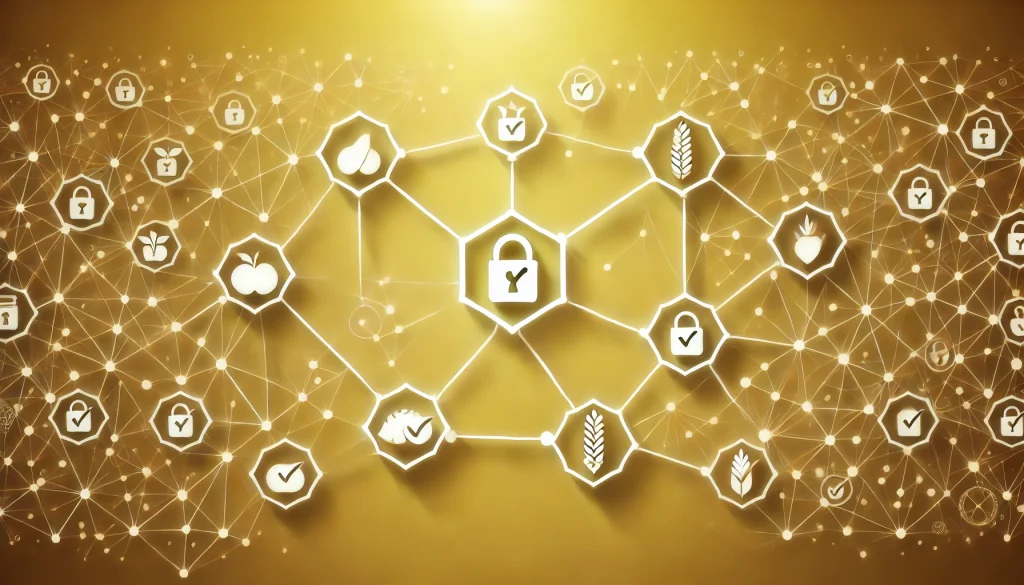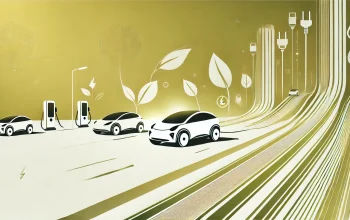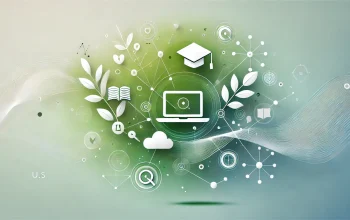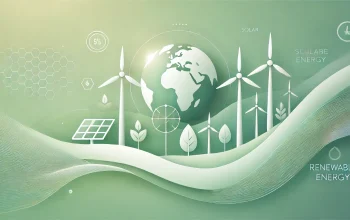Blockchain Technology : Revolutionizing Food Supply Transparency 2025

In today’s increasingly interconnected world, transparency in the food supply chain has become more important than ever. Consumers want to know where their food comes from, how it’s produced, and whether it’s safe. However, the complexity of global food supply chains makes it difficult to ensure clear and traceable information for every product. Enter blockchain technology — a groundbreaking solution that has the potential to revolutionize the way we track and verify food throughout the entire supply process.
In this article, we’ll dive deep into how blockchain technology works, its benefits for the food supply chain, and real-world examples of how it’s improving transparency. By the end, you’ll understand why blockchain isn’t just a buzzword — it’s the future of secure, transparent, and efficient food systems.
Table of Contents
Understanding Blockchain Technology
Before we get into its applications in the food supply chain, it’s crucial to understand what blockchain technology is and how it works. Essentially, blockchain is a decentralized digital ledger that records transactions across multiple computers in a way that ensures the data cannot be altered retroactively. Each “block” in the chain contains data about the transaction, and once a block is completed, it’s added to the “chain,” forming a transparent and unchangeable record.
Key Characteristics of Blockchain:
- Decentralization: Instead of relying on a single central authority, blockchain operates across a distributed network of computers. This makes it more secure and less prone to data tampering.
- Immutability: Once data is recorded in a blockchain, it cannot be changed or deleted. This ensures an accurate, trustworthy record of all transactions.
- Transparency: All participants in the blockchain network can view the entire history of transactions, providing complete visibility across the system.
- Security: The data on the blockchain is encrypted, and the decentralized nature makes it difficult for hackers to compromise.
Now, let’s explore how this revolutionary technology can be applied to improve food supply chain transparency.
Challenges in the Traditional Food Supply Chain
The modern food supply chain is long and complex, involving numerous intermediaries, including farmers, processors, distributors, retailers, and regulators. Each step in the chain comes with its own challenges:
- Lack of Visibility: With multiple players involved, it’s difficult to maintain an accurate record of where food products come from and what processes they’ve undergone. This can lead to mislabeling or false claims about the origin or quality of the food.
- Food Safety Risks: Contaminated food can spread quickly across the globe due to the interconnected nature of food supply chains. Without real-time data tracking, it’s hard to identify the source of contamination, leading to delays in addressing food safety concerns.
- Inefficiency: The traditional record-keeping methods are often paper-based and prone to human error. This not only slows down the process but also increases the chances of fraudulent activity.
- Consumer Trust: In an era where consumers are increasingly concerned about sustainability, ethical sourcing, and food safety, transparency is key to building trust. Traditional supply chains struggle to provide the level of traceability that consumers now demand.
How Blockchain Enhances Transparency
Blockchain technology offers several game-changing benefits for enhancing transparency in the food supply chain.
1. Real-Time Traceability
One of the primary benefits of blockchain technology is that it allows for real-time traceability. Using blockchain, every participant in the supply chain can record detailed information about the journey of food products, from farm to table. Consumers can access this data by scanning QR codes on products, providing them with a transparent view of where the food was grown, processed, and shipped.
For example, in the case of a food recall, blockchain can instantly identify the contaminated batch and trace it back to the specific farm or facility, speeding up response times and limiting the spread of unsafe products.
2. Immutable Records for Food Safety
Because blockchain records are immutable, they provide an unalterable history of each food product’s journey through the supply chain. This is crucial for ensuring food safety and compliance with health regulations. Once data is entered into the blockchain, it can’t be changed or tampered with. This means that if a problem arises, regulators and companies can trust the data to accurately identify the source of contamination or fraud.
For instance, the blockchain can include details like whether a certain product was stored at the correct temperature throughout transportation. Any deviation can be flagged immediately, ensuring that potentially unsafe food never reaches the consumer.
3. Combating Fraud and Counterfeiting
Food fraud, where products are mislabeled or misrepresented, costs the industry billions every year. Blockchain helps to combat this by providing complete transparency at every step of the supply chain. Since each transaction is recorded and visible to all participants, it becomes much harder for dishonest actors to falsify records.
For example, blockchain can verify that organic or Fair Trade labels are genuinely certified. It ensures that a product labeled as “wild-caught” fish was indeed sourced from an approved sustainable fishery, building trust with consumers who value ethical sourcing.
4. Efficient and Automated Audits
Traditionally, auditing a supply chain involves sifting through piles of paperwork and digital records, a time-consuming and error-prone process. Blockchain simplifies this by consolidating all data in a single, digital ledger that’s easily accessible. Smart contracts — self-executing contracts with the terms written into the code — can automate the verification process, ensuring compliance without manual intervention.
For example, if a batch of products needs to meet certain regulatory requirements before shipping, a smart contract can automatically verify compliance and trigger the next step in the process. This reduces the need for human oversight and speeds up the entire supply chain.
Real-World Applications of Blockchain in Food Supply Chains
Several companies and organizations are already leveraging blockchain to improve transparency and traceability in their food supply chains. Here are a few notable examples:
1. Walmart
Walmart has been a pioneer in using blockchain for food supply chain transparency. In collaboration with IBM, the retail giant implemented a blockchain-based system that tracks the origins of leafy greens like spinach and lettuce. The system can trace the product’s entire journey — from the farm to the store — in just seconds.
Previously, tracing a contaminated food product could take days or even weeks, but with blockchain, Walmart can now identify the exact source of contamination almost instantly. This has significantly improved food safety and reduced the risk of large-scale recalls.
2. Nestlé
Nestlé, one of the world’s largest food companies, has also turned to blockchain to improve transparency. In 2020, Nestlé began using blockchain to track the supply chain of its Zoégas coffee brand. Consumers can scan a QR code on the packaging to learn about the coffee’s origins, including details about the farms, harvest methods, and sustainability certifications.
This not only ensures transparency but also helps build trust with consumers who are increasingly demanding more information about the products they purchase.
3. Carrefour
The French supermarket chain Carrefour is another company that’s leading the way in blockchain adoption. The company has implemented blockchain technology to track several products, including eggs, milk, and chicken. Consumers can scan a QR code to see details about where the food was sourced, how it was produced, and when it was transported.
The company has reported an increase in consumer trust and loyalty since introducing blockchain-based tracking, proving that transparency pays off in building stronger relationships with customers.
Future Potential of Blockchain in Food Supply Chains
While blockchain has already shown its potential in improving transparency, we are only scratching the surface of what’s possible. As the technology matures, we can expect even more widespread adoption and innovation. Here are a few ways blockchain could further revolutionize food supply chains in the future:
1. Global Standards for Blockchain-Based Supply Chains
As more companies adopt blockchain, there will be a need for standardized protocols and guidelines to ensure seamless integration across different players in the supply chain. Organizations like the Food and Agriculture Organization (FAO) and the World Health Organization (WHO) could play a role in establishing these standards to ensure that blockchain-based systems are interoperable across borders.
2. Blockchain and Internet of Things (IoT) Integration
The combination of blockchain with IoT devices offers immense potential for the food industry. IoT devices can automatically capture data on the conditions in which food is stored and transported, such as temperature and humidity. This data can be fed directly into the blockchain, providing an even more detailed and accurate record of the product’s journey.
For example, sensors in trucks transporting seafood can monitor the temperature in real-time. If the temperature deviates from the safe range, this data is recorded in the blockchain, triggering alerts to prevent spoiled seafood from reaching the market.
3. Blockchain for Sustainable and Ethical Sourcing
As consumers increasingly demand sustainably sourced products, blockchain can help ensure that ethical practices are followed throughout the supply chain. By recording detailed information about the sourcing of raw materials, companies can prove that they meet certain environmental or social standards, such as fair wages or reduced carbon emissions. This will become a critical tool for companies committed to sustainable practices.
Conclusion
Blockchain technology holds the key to enhancing transparency, efficiency, and trust in the global food supply chain. By providing real-time traceability, creating immutable records, and preventing fraud, blockchain empowers consumers to make informed decisions about the food they purchase. It also benefits businesses by reducing inefficiencies, increasing accountability, and improving food safety.
As blockchain adoption continues to grow, the food supply chain will become more transparent and resilient, ensuring that we can meet the demands of a rapidly changing world while maintaining the highest standards of quality and safety.
Whether you’re a consumer looking for more information about the products you buy or a business seeking to enhance your supply chain operations, blockchain is the future — and the future is transparent.


